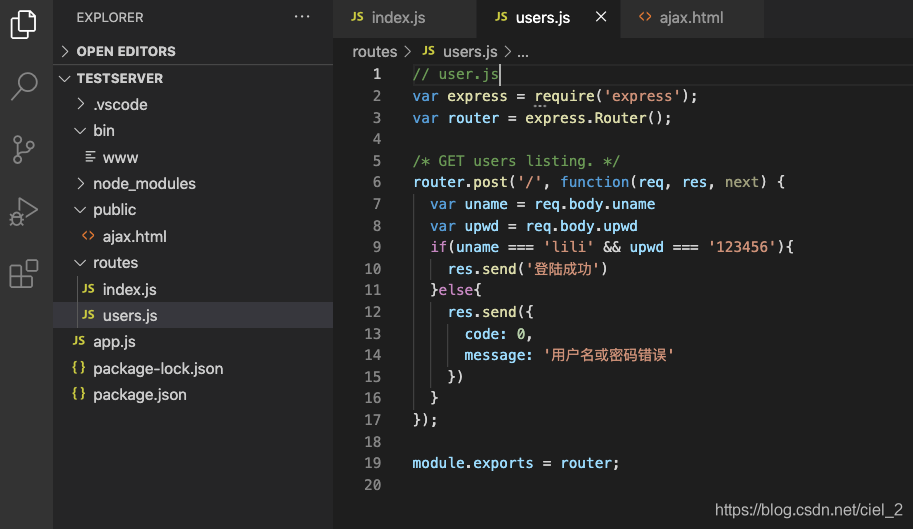這篇文章主要介紹了利用promise及參數(shù)解構(gòu)封裝ajax請求的方法,本文給大家介紹的非常詳細(xì),對大家的學(xué)習(xí)或工作具有一定的參考借鑒價值,需要的朋友可以參考下
1、前端代碼
<!DOCTYPE html>
<html>
<head>
<meta charset="UTF-8">
<meta name="viewport" content="width=device-width, initial-scale=1.0">
<title>Document</title>
</head>
<body>
<script>
/**
* type: get/post
* url: http://localhost:3000 http://localhost:3000/details http://localhost:3000/users
* data: lid=5 / uname=lili&upwd=123456
* dataType: '' / 'json', 如果服務(wù)端返回的是json格式字符串,就通過dataType通知ajax函數(shù)自動轉(zhuǎn)換為對象
**/
ajax({
type: 'get',
url: 'http://localhost:3000',
dataType: 'json'
})
// data 不寫在解構(gòu)時值默認(rèn)為 data: undefined
ajax({
type: 'get',
url: 'http://localhost:3000/details',
data: 'lid=0',
dataType: 'json'
})
ajax({
type: 'post',
url: 'http://localhost:3000/users',
data: 'uname=lili&upwd=123456',
}).then(function(res){
alert(res)
})
// dataType 不寫在解構(gòu)時值默認(rèn)為 dataType: undefined
function ajax({type, url,data, dataType}){
return new Promise(function(open){
var xhr = new XMLHttpRequest()
xhr.onreadystatechange = function(){
if(xhr.readyState === 4 && xhr.status === 200){
if(dataType === 'json'){
var res = JSON.parse(xhr.responseText)
} else {
var res = xhr.responseText
}
console.log(res)
open(res)
}
}
if(type === 'get' && data !== undefined){
url += `?${data}`
}
xhr.open(type, url, true)
xhr.setRequestHeader('Content-Type','application/x-www-form-urlencoded')
if (type === 'get') {
xhr.send()
} else {
xhr.send(data)
}
})
}
</script>
</body>
</html>另:ajax實際代碼實現(xiàn)如下
<!DOCTYPE html>
<html>
<head>
<meta charset="UTF-8">
<meta name="viewport" content="width=device-width, initial-scale=1.0">
<title>Document</title>
</head>
<body>
<script>
var xhr = new XMLHttpRequest()
xhr.onreadystatechange = function(){
if(xhr.readyState === 4 && xhr.status === 200){
console.log(xhr.responseText)
}
}
xhr.open('get', 'http://localhost:3000', true)
xhr.send()
</script>
</body>
</html>2、后端代碼
1) 創(chuàng)建一個后端項目

2) 在routes下創(chuàng)建index.js,users.js,代碼如下
// index.js
var express = require('express');
var router = express.Router();
/* GET home page. */
var products = [
{
lid:1,
pname:'筆記本',
price:3400
},
{
lid:2,
pname:'手機(jī)',
price:5400
},
{
lid:3,
pname:'iPad',
price:6400
}
]
router.get('/', function(req, res, next) {
res.send(products)
});
router.get('/details', function(req, res, next){
var lid = req.query.lid
res.send(products[lid])
})
module.exports = router;3、注:
為避免跨域,可將前端代碼和后端同時放在一個項目內(nèi),使用同一地址,再發(fā)送請求調(diào)取接口。






